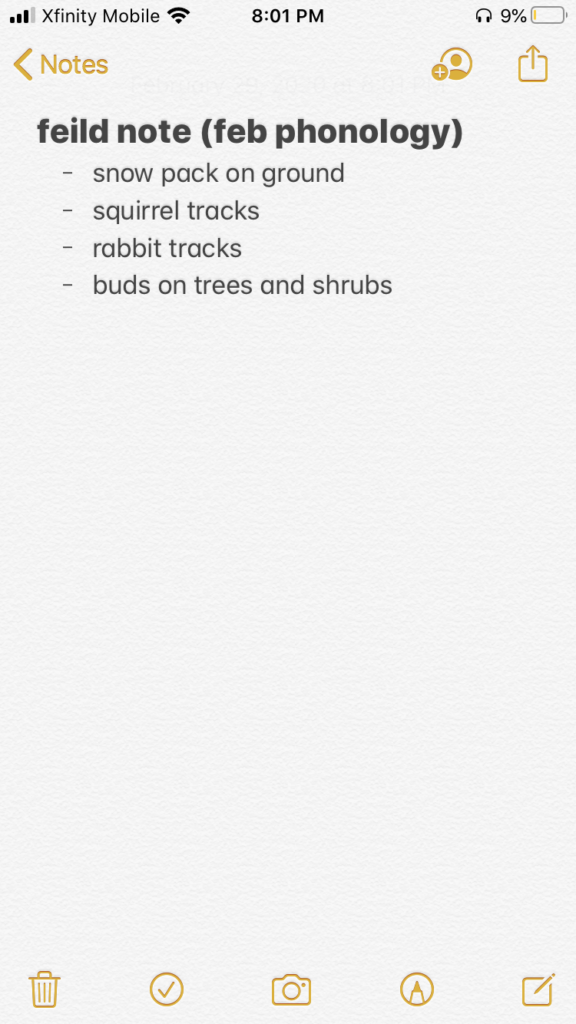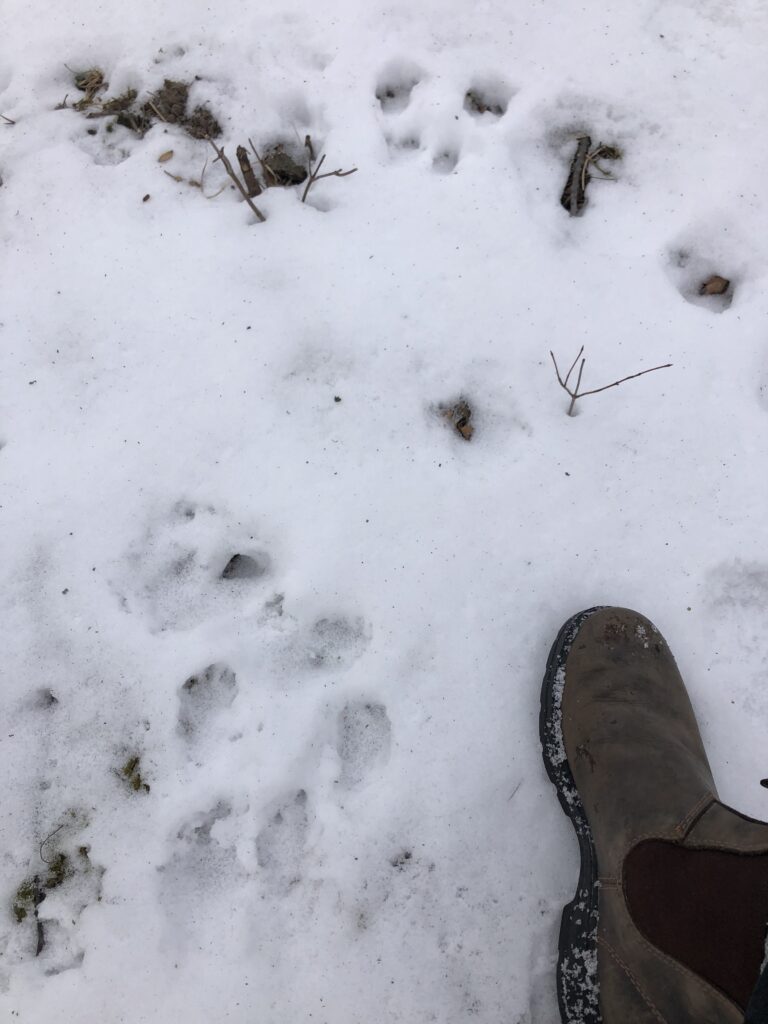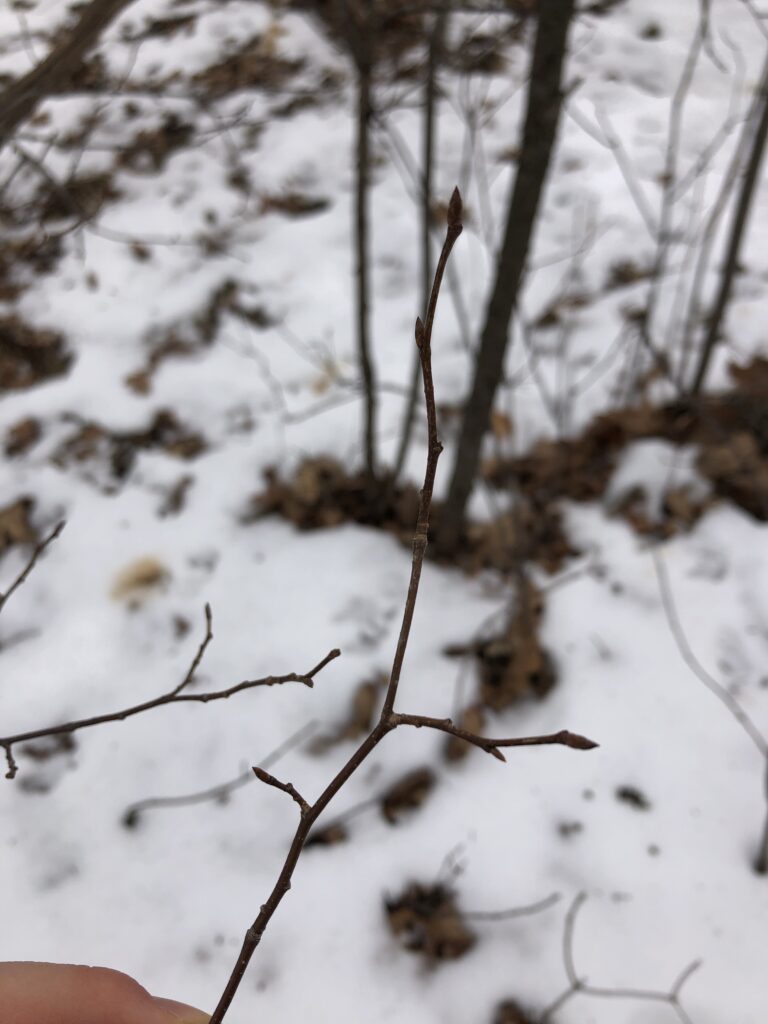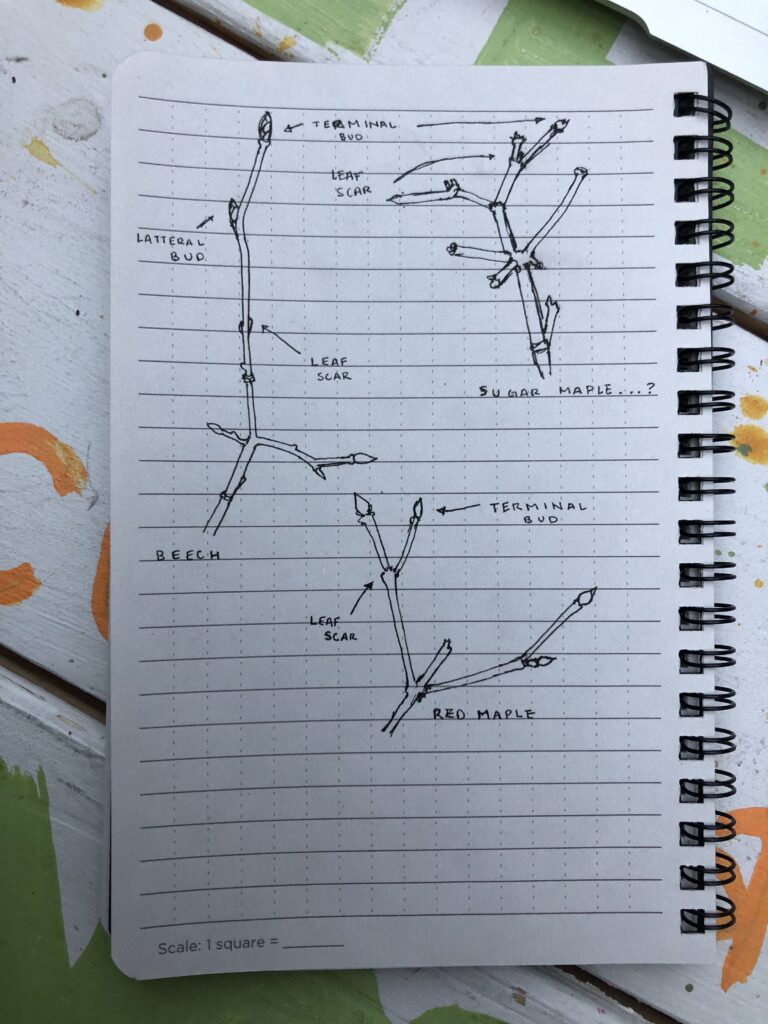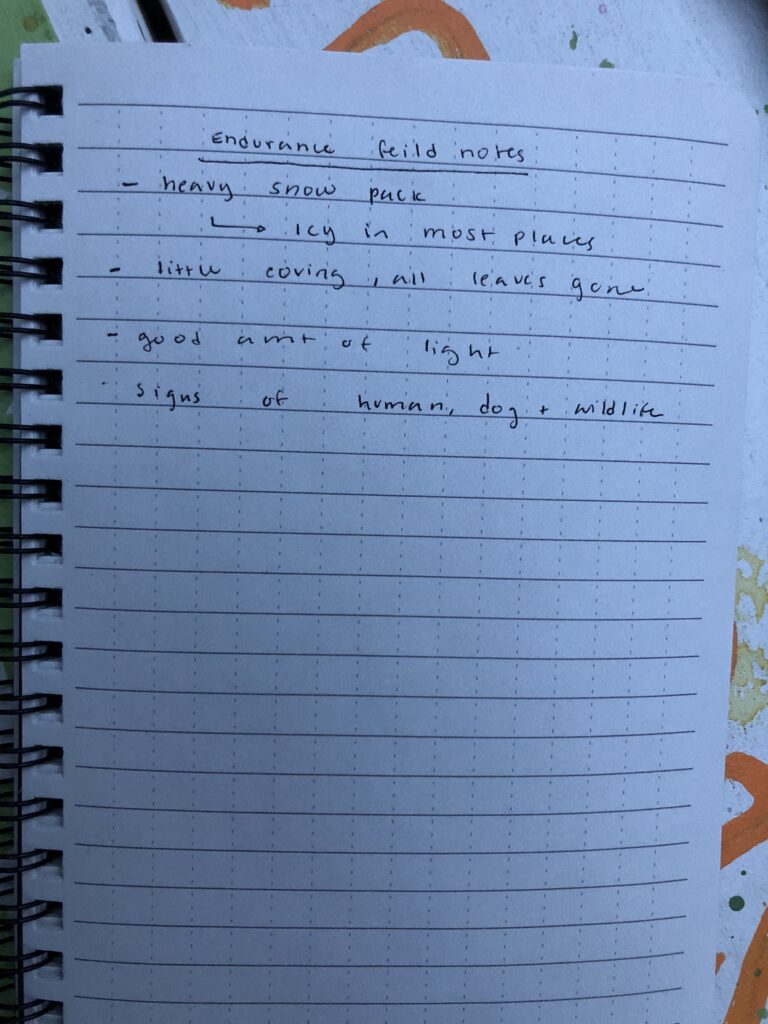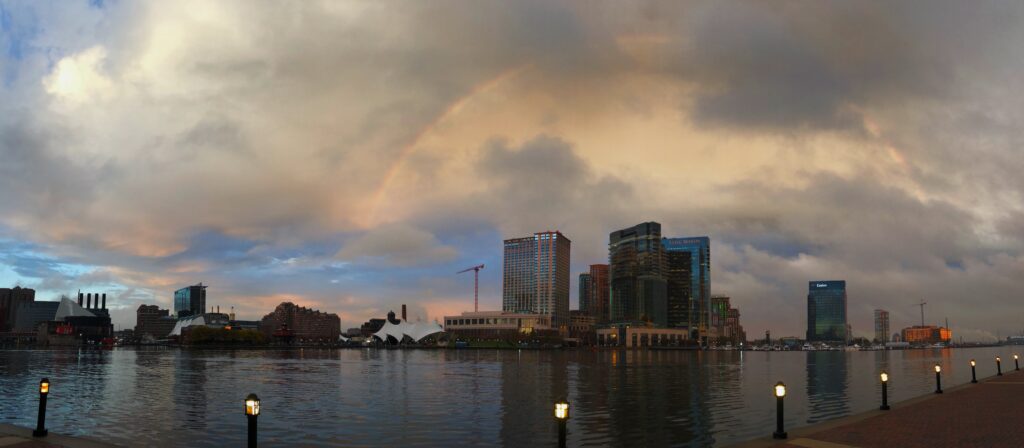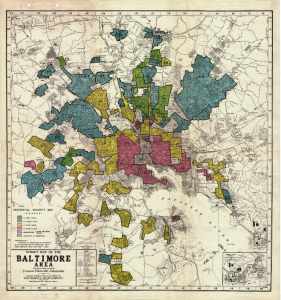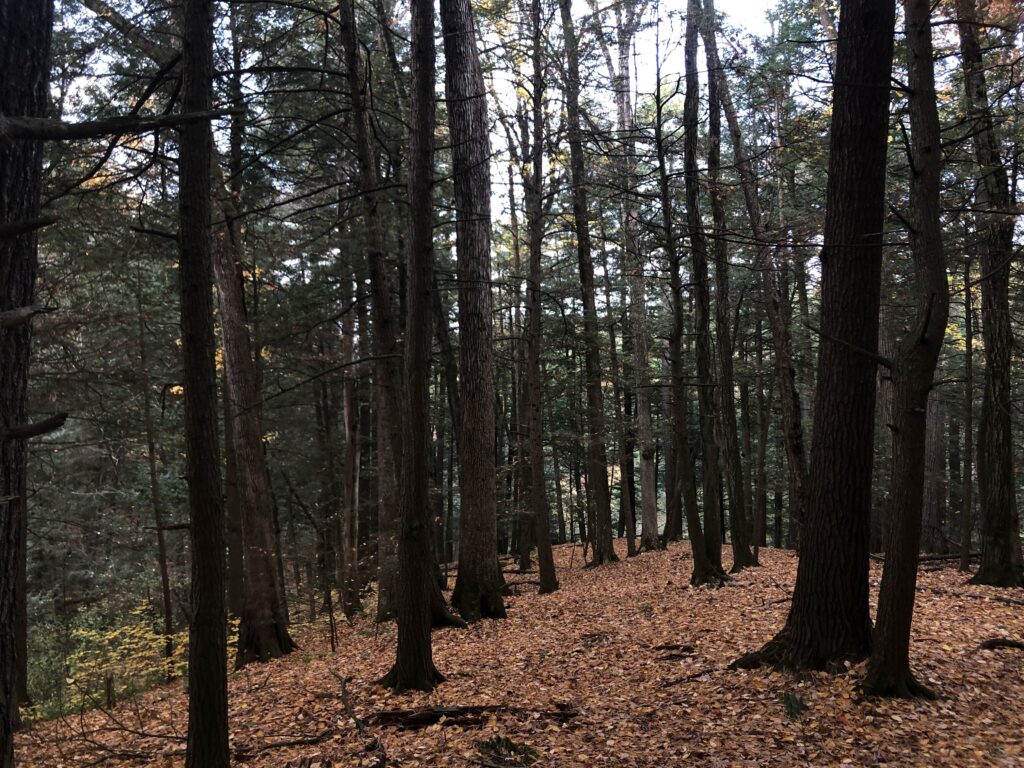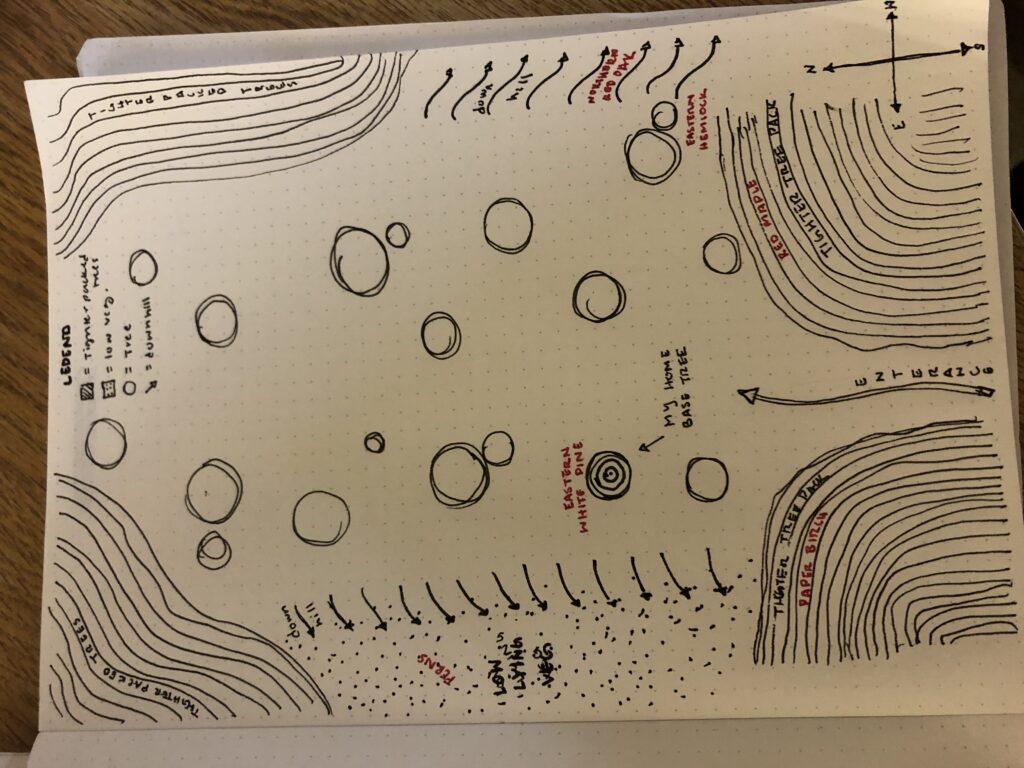
looking at my site this month, it looks almost identical to last months trip. Snow pack is still present underfoot, maybe a tad denser with the more recent snow fall, along with small buds on trees/bushes.
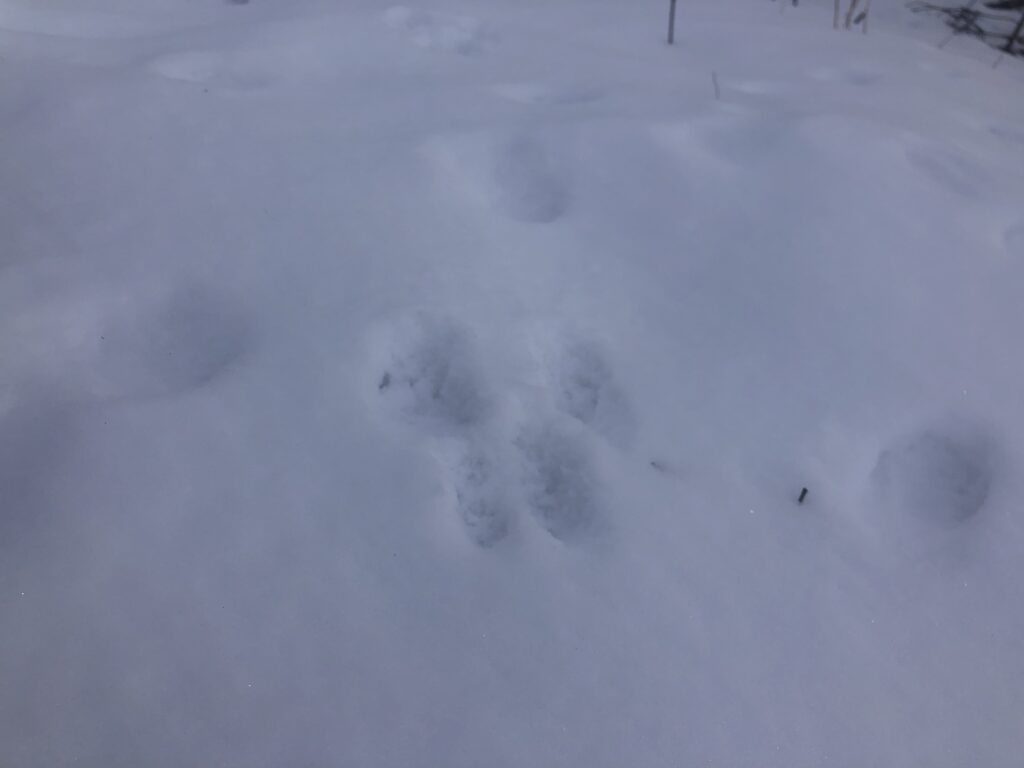
this visit i observed squirrel tracks once more. these tracks floated around the site, disappearing and reappearing around trees especially. Squirrels tend to reside in trees, living and storing food (Nuts, Seeds, etc.) there during the winter months. they are also only active during the day when the sun is up (Branford, 2014). Given their chosen place of residence, these track patterns make sense.
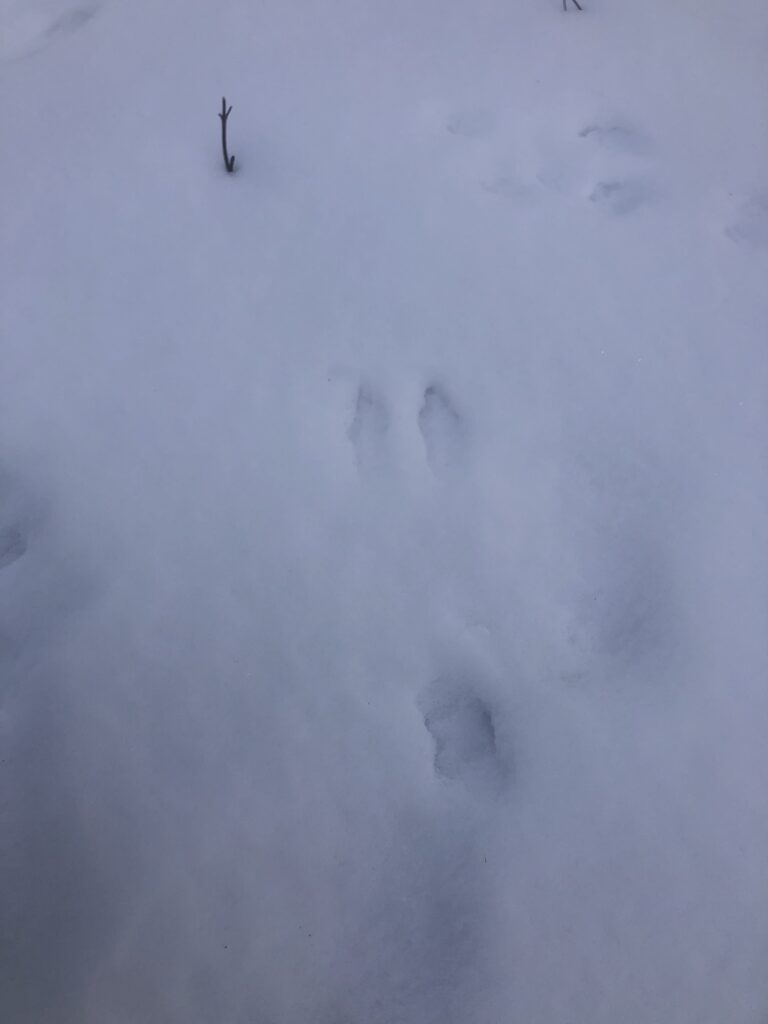
Hilker, D. (2020)
I also saw some Rabbit tracks in the woods, these tracks crossed paths with the squirrels tracks multiple times. they are both considered small woodland animals, despite ground squirrels being predators of some rabbits. rabbits are herbivores, fast runners and burrow and nest in tunnels under ground (Bradford, 2017). i didn’t see a tunnel entrance, but given the tracks it wouldn’t have been surprising if i has seen one.
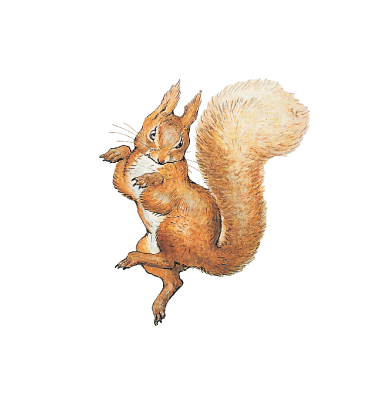
all and all, the site hasn’t shifted that drastically from my last visit, the squirrels tracks were even in a relatively similar place as my February visit.
references:
Bradford, A. (2014, June 27). Squirrels: Diet, Habits & Other Facts. Retrieved from https://www.livescience.com/28182-squirrels.html
Bradford, A. (2017, March 7). Rabbits: Habits, Diet & Other Facts. Retrieved from https://www.livescience.com/28162-rabbits.html
